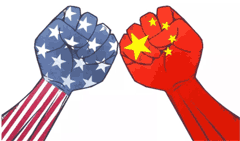Gilmore Says.... |
 |
The current surge in demand for bonded space is a bet that paying more to store goods now is still better than paying the tariffs as currently valued.
|
 |
What do you say? |
|
| Click here to send us your comments |
| |
|
|
|
This week, consumer package goods giant Procter & Gamble said the tariffs would add $1-1.5 billion in additional costs in 2025, based on its experience in the first month of new tariff regime. Not surprisingly, P&G says price hikes to its retail customers and thus consumers are likely.
That to me is when the stuff will hit the fan.
Just to get everyone on the same page, because I continue to see some political commentators get this wrong, tariffs are not paid by China or whatever the exporting nation is, but rather must be satisfied by the importing organization.
So with the near immediate or at best short-term enactment of the tariffs from when they were announced and when they became effective, it means goods that were ordered for delivery to the US at a given price suddenly cost the importer 20, 40, or 100% more than what the deal was, often to containers already in route.
That would seem to eat up a lot of margin, to say the least. Tariffs on all Chinese imports are now a mind boggling 145%, meaning a company that ordered widgets at say $100 per unit must now pay that one hundred plus another $145 for a new, absurd $245 total cost.
I don’t know if that will drive lots of widget makers to move production to the US, which is the whole idea, but something will obviously have to change.
Can an importer simply refuse the shipment, and if so, what happens and at what cost to whom?
I am not sure.
But as see reported two weeks ago in our OnTarget newsletter, this situation has led to a surge in demand for something called customs bonded warehouses. What’s that?
 According to the US Customs and Border Protection website, a customs bonded warehouse is a “building or other secured area in which imported dutiable merchandise may be stored, manipulated, or undergo manufacturing operations without payment of duty for up to 5 years from the date of importation.” According to the US Customs and Border Protection website, a customs bonded warehouse is a “building or other secured area in which imported dutiable merchandise may be stored, manipulated, or undergo manufacturing operations without payment of duty for up to 5 years from the date of importation.”
This can allow importing companies to await a more favorable tariff time for their products before bringing them into the US, but even in regular times can enable a company to await paying the tariff until the goods are sold.
On the other hand, using a customs bonded warehouse means a company is just sitting on that inventory while it’s there, taking up working capital and subject to a variety of inventory risks.
Seems a somewhat dubious tactic to me, but a Wall Street Journal on the matter said the phones are ringing off the hook at such bonded facilities, even though it is a lot more expensive than regular warehouse space.
The current surge in demand for bonded space is a bet that paying more to store goods now is still better than paying the tariffs as currently valued.
The Journal also reported interestingly on the impact of all this on some specific companies. For example, a company named Lilac St. madly raced to stop a truck carrying the company’s fake eye lashes before it entered the US.
The owner of the company said that “If we pay 145% tariffs we would lose a significant amount of money on every product we send in.”
Another company, toymaker Basic Fun (Lincoln Logs, Care Bears) is suspending Chinese imports awaiting changes to the tariff levels, with just two months of inventory to carry it through.
For Basic Fun and thousands of other companies, safety stock never sounded so good.
Who knows where all this is headed, from a global recession to US manufacturing renaissance, but my guess is as usual the impact will be different than most are predicting now.
Any reaction to this comment n tariffs? Let us know your thoughts at the Feedback section below.
Your Comments/Feedback
|